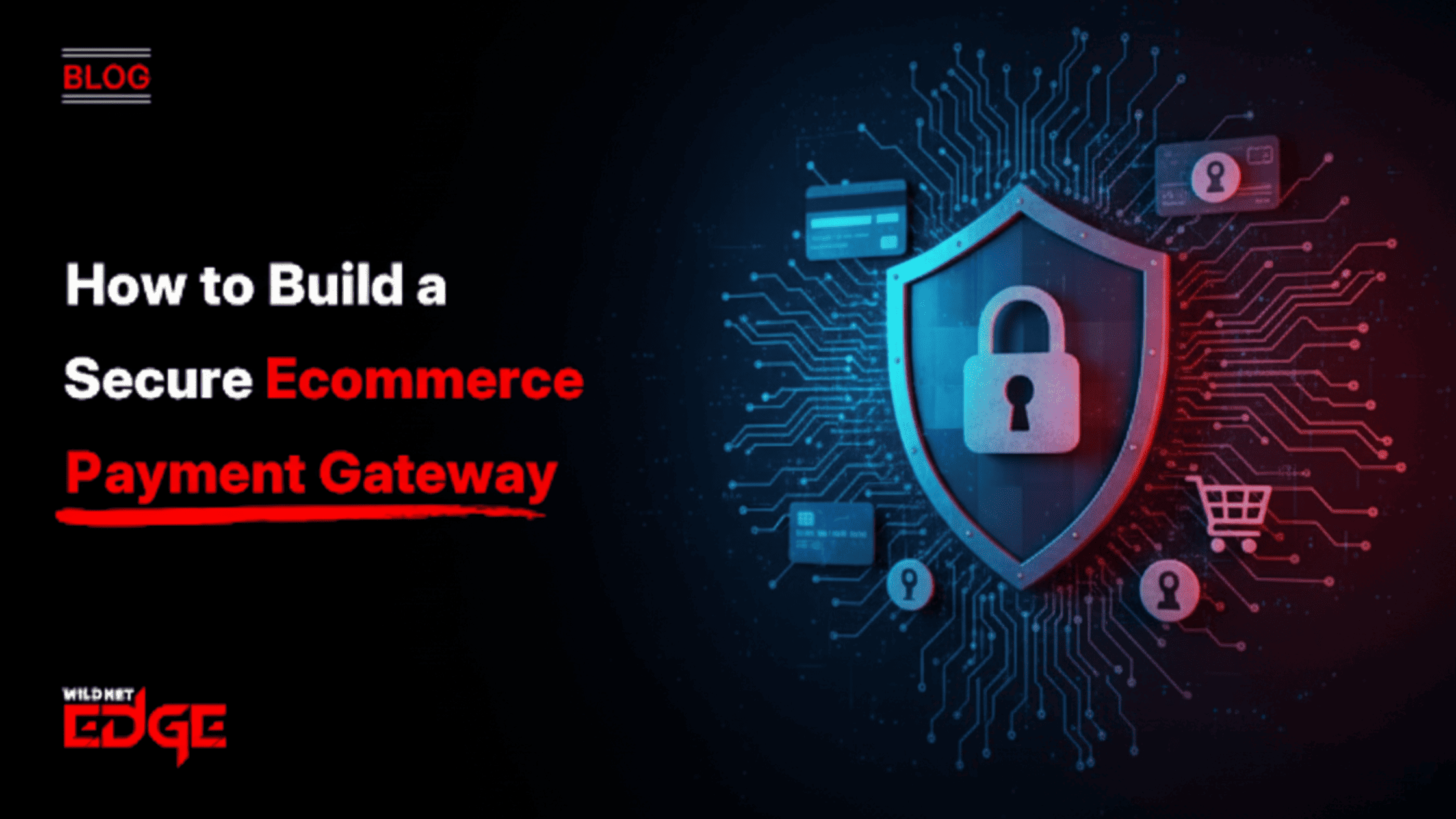The moment a shopper hits ‘Pay’ is the moment of truth for your online store. It’s the critical step where all your marketing and design efforts either pay off or fall flat. At the centre of this conversion is your e-commerce payment gateway, the secure invisible bridge that handles the money, linking your website, your customer’s bank, and your own financial account. While pre-built gateways are easy to use, some businesses realize they need the ultimate control and customization that only comes from building their own solution. Taking this custom route means one thing: an absolute, unwavering commitment to security.
In the digital marketplace, the checkout process is the moment of truth. It’s where a browsing visitor converts into a paying customer. At the heart of this crucial transaction lies the ecommerce payment gateway, the secure bridge connecting your store, customer, and financial institutions. While using third-party gateways is common, some businesses require the control and customisation that only comes from building their own. However, this path requires an unwavering commitment to security.
What is an eCommerce Payment Gateway?
An e-commerce payment gateway is a service that authorises credit card or direct payment processing for online businesses. Think of it as the digital equivalent of a retail store’s physical point-of-sale (POS) terminal. The gateway securely encrypts the information customers enter when they enter their payment details on your site. It is transmitted between your website, the payment processor (which communicates with the banks), and back.
Although it works closely with both, a gateway is different from a payment processor or a merchant account. The gateway’s primary role is the secure transmission and authorisation of transaction data, forming the critical link for safe online payments.
Why Security is the Absolute Priority
For an ecommerce payment gateway, security isn’t just a feature; it’s the entire foundation. A breach involving payment data can be catastrophic:
- Financial Losses: You could be liable for fraudulent transactions and face significant recovery costs.
- Regulatory Fines: Non-compliance with standards like PCI DSS can result in crippling fines.
- Reputational Damage: Losing customer trust due to a data breach can irrevocably damage your brand. News of breaches spreads rapidly, deterring future customers.
Therefore, every decision made during the development process must prioritise robust security measures and adherence to strict cybersecurity best practices.
Core Components and Security Measures
Building a secure gateway involves several key components and non-negotiable security protocols.
1. Payment Processor Integration
Your gateway needs to securely communicate with one or more payment processors (like Stripe Connect, Adyen, or Fiserv). This payment integration is complex and requires careful handling of sensitive API keys and communication protocols.
2. Merchant Account Connection
The gateway facilitates the transfer of funds into your business’s merchant account, requiring secure protocols for settlement and reporting.
3. PCI DSS Compliance (Mandatory)
The Payment Card Industry Data Security Standard (PCI DSS) is a set of security standards designed to ensure that all companies that accept, process, store, or transmit credit card information maintain a secure environment. Achieving and maintaining PCI compliance is a complex, ongoing process involving strict requirements for network security, data protection, vulnerability management, and access control. Failure to comply can result in severe penalties. According to the official PCI Security Standards Council, compliance is vital for preventing breaches.
4. End-to-End Encryption
All sensitive data, especially the Primary Account Number (PAN), must be encrypted the moment the customer enters it and remain encrypted as it travels through the various systems (in transit) and while stored (at rest). Using strong encryption algorithms like AES-256 is essential.
5. Tokenisation
Tokenisation is a process where sensitive card details are replaced with a unique, non-sensitive equivalent known as a token. This token can be stored and used for future transactions without exposing the actual card number. The real card data is stored securely off-site by the payment processor. This significantly reduces your PCI compliance scope and the risk associated with storing sensitive data.
6. Advanced Fraud Detection
A secure ecommerce payment gateway needs intelligent fraud detection mechanisms. This can include:
- Address Verification System (AVS): Checks the billing address against the cardholder’s address on file.
- Card Verification Value (CVV): Checks the three- or four-digit security code.
- Velocity Checks: Monitor for unusually high numbers of transactions from a single IP address or card.
- AI/Machine Learning: Advanced systems use AI to analyse transaction patterns and identify potentially fraudulent behaviour in real-time.
The Development Process: Key Considerations
Building your own gateway is a highly complex, secure web development project.
- Deep Security Expertise: Your team must have deep expertise in cryptography, network security, and compliance standards.
- Rigorous Testing: Extensive security testing, including penetration testing by third-party experts, is non-negotiable before launch.
- Ongoing Maintenance: Security threats are constantly evolving. You need a dedicated team for continuing monitoring, patching, and compliance audits.
For many businesses, partnering with specialised providers for e-commerce development Services is a more practical approach than building entirely in-house.
Building vs. Buying: A Strategic Decision
While building offers maximum control, it’s a massive undertaking.
| Factor | Building Custom Gateway | Using Third-Party Gateway |
| Control & Customization | Complete control | Limited by the provider’s features |
| Initial Cost & Time | Very High | Low to Moderate |
| Security & Compliance Burden | Entirely your responsibility | Shared responsibility (provider handles much of it) |
| Maintenance | Significant ongoing effort | Handled by the provider |
| Best For | Large enterprises with unique needs & resources | Most SMBs and many enterprises |
Our Secure Development Practices in Action: Case Studies
Case Study 1: A Marketplace Platform’s Custom Integration
- The Challenge: A niche online marketplace needed to handle complex split payments between buyers, sellers, and the platform itself. Standard third-party gateways couldn’t support their specific commission structure.
- Our Solution: While not building a complete gateway from scratch, we provided Custom Software Development Services to create a secure middleware layer. This layer integrated with Stripe Connect’s APIs, managed the complex fund splitting logic, and ensured PCI compliance through careful handling of tokenised data.
- The Result: The platform was able to launch its unique business model securely and efficiently. The custom payment integration layer provided the flexibility they needed while leveraging the security infrastructure of a central payment processor.
Case Study 2: An Enterprise Retailer’s Tokenisation Project
- The Challenge: A large retailer with an existing custom checkout process wanted to reduce their PCI compliance burden by removing sensitive card data storage from their systems.
- Our Solution: We re-architected their checkout flow to implement a tokenisation solution with their payment processor. Customer card details were sent directly from the browser to the processor, which returned a token. Our system then only stored and used these non-sensitive tokens.
- The Result: The retailer significantly reduced their PCI DSS scope, saving hundreds of thousands annually on compliance costs. The move also enhanced their overall security posture for secure online payments.
Our Technology Stack for Secure Payment Solutions
We prioritise security in every layer of the stack.
- Backend: Node.js, Python, Java, .NET (with security frameworks)
- Encryption Libraries: OpenSSL, Bouncy Castle
- API Security: OAuth 2.0, JWT
- Cloud Security: AWS KMS, Azure Key Vault, GCP Cloud KMS
- Compliance Tools: Security scanning tools (e.g., Qualys, Nessus)
Conclusion
Building a custom eCommerce payment gateway is a complex, high-stakes task that should only be undertaken with deep expertise and significant resources. While it offers ultimate control, the responsibilities for security and compliance are immense. For most businesses, leveraging secure third-party gateways or building custom integrations on top of established processors provides the best balance of flexibility, security, and cost-effectiveness.
Need expert guidance on ensuring secure online payments for your business? At Wildnet Edge, our AI-first approach enhances our development practice. We build intelligent fraud detection systems and secure Software Development Solutions designed to protect your revenue and build customer trust in every transaction.
FAQs
Achieving and maintaining PCI DSS compliance is extremely difficult and resource-intensive, especially for higher levels involving the storage of cardholder data. It requires rigorous annual audits, penetration testing, and adherence to hundreds of specific security controls. This is a significant reason why many businesses choose not to build their own gateway from scratch.
Building a truly secure and compliant gateway from scratch is a multi-year project, often taking 18-36 months or longer, requiring a dedicated team of security and payment experts.
Yes, you can use open-source components, but be very cautious. You might use open-source libraries for functions like basic encryption. However, the payment gateway’s core logic and security structure demand meticulous custom development and review.
This requires a dedicated security team and a robust patch management process. You must constantly monitor your codebase and all third-party libraries for new vulnerabilities, test patches thoroughly, and deploy them quickly without causing downtime.
The gateway is the secure messenger; it encrypts and transmits the payment data. The processor is the entity that communicates with the banks (Visa, Mastercard, issuing banks, and acquiring banks) to actually authorise the transaction and move the funds. They work together, but perform different functions.
Tokenisation replaces the actual credit card number with a meaningless token. Even if a hacker breaches your system and steals the tokens, they are useless without the original, securely stored mapping held by the payment processor. It drastically reduces the value of the data stored on your servers.
Using a compliant third-party gateway significantly reduces your PCI scope, especially if you use their hosted fields or redirect methods so card data never touches your servers. However, you still have some compliance responsibilities related to securing your website and ensuring you don’t inadvertently store sensitive data elsewhere.

Nitin Agarwal is a veteran in custom software development. He is fascinated by how software can turn ideas into real-world solutions. With extensive experience designing scalable and efficient systems, he focuses on creating software that delivers tangible results. Nitin enjoys exploring emerging technologies, taking on challenging projects, and mentoring teams to bring ideas to life. He believes that good software is not just about code; it’s about understanding problems and creating value for users. For him, great software combines thoughtful design, clever engineering, and a clear understanding of the problems it’s meant to solve.
 sales@wildnetedge.com
sales@wildnetedge.com +1 (212) 901 8616
+1 (212) 901 8616 +1 (437) 225-7733
+1 (437) 225-7733































